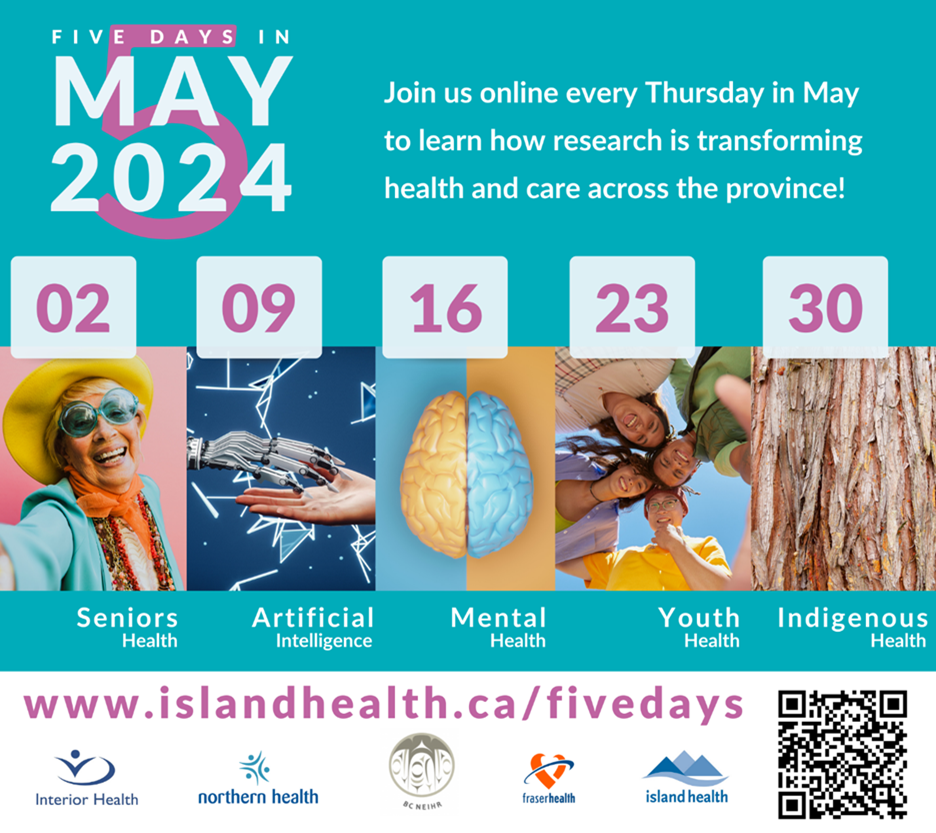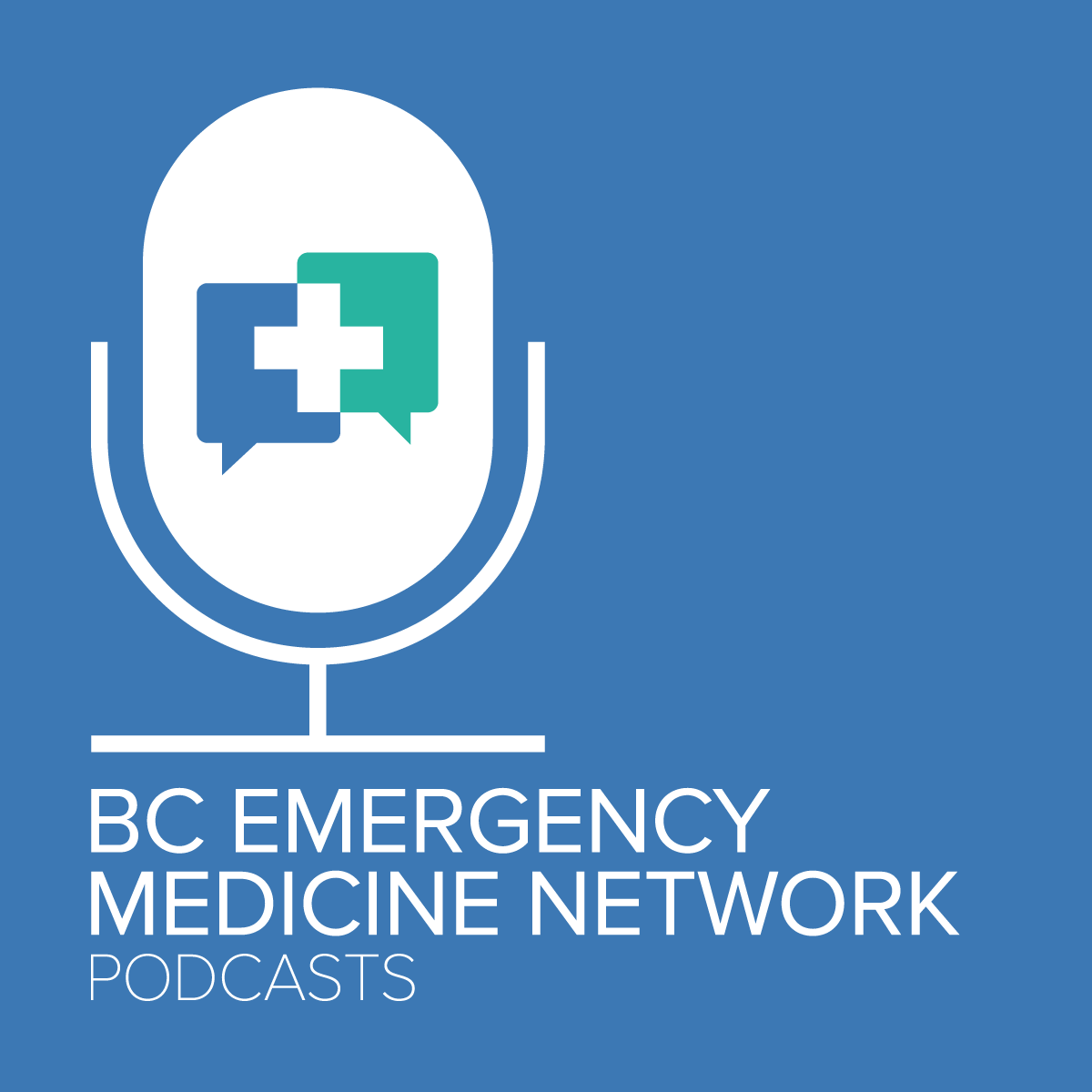ECBC Patient Discharge Resources

- All events will take place on Thursdays between 12 – 2/2:30 pm via Zoom.
- All events are free and open to anyone.
- May 2: Keeping the Golden Years Bright: Enhancing Quality of Life for Seniors
- May 9: Artificial Intelligence: Navigating the Future in Health and Research
- May 16: Advancing Medicine and Care in Mental Health
- May 23: Bright Futures: Engaging Youth in Health Research
- May 30: Indigenous-Led Health Research: Fostering Wellness, Strengthening Knowledge
ECBC Patient Discharge Resources

Five Days in May 2024
SUMMARY
Five Days in May 2024
This year’s events will take place from 12 – 2:30 p.m. every Thursday in May.
Five Days in May is back for its 12th year to showcase research across the province!
B.C.’s health research month is designed to educate, inform, inspire, stimulate, and transform.
Every year, Island Health collaborates with partner organizations to bring together researchers and students, patients and healthcare providers, decision-makers and members of the public to learn, share ideas and spark innovation.
Details and dates below:
For more information, visit https://www.islandhealth.ca/research-capacity-building/five-days-may
Island Medicine Conference: Updates, Skills and Networking
SUMMARY

May 3 – 4, 2024
Please join us in May for this year’s Island Medicine Conference – a great inter-island community conference designed for all health care professionals working either on the island or elsewhere. Based on your feedback, we have some great new topics and have brought back some others by popular demand.
Accommodation
Fairmont Empress Victoria
721 Government Street, Victoria, BC V8W 1W5
4-star resort located in the heart of Victoria, steps away from the Parliament Buildings
Joined to the Victoria Conference Centre via a covered walkway
Complimentary Wifi access
Room rates starting at $269 CAD + taxes & fees. Parking is not included
Group room rates available until April 1, based on room availability
Rates are available 3 days pre- and post-conference
Five Days in May 2024
Island Medicine Conference: Updates, Skills and Networking




Dr. Julian Marsden
April 22, 2024